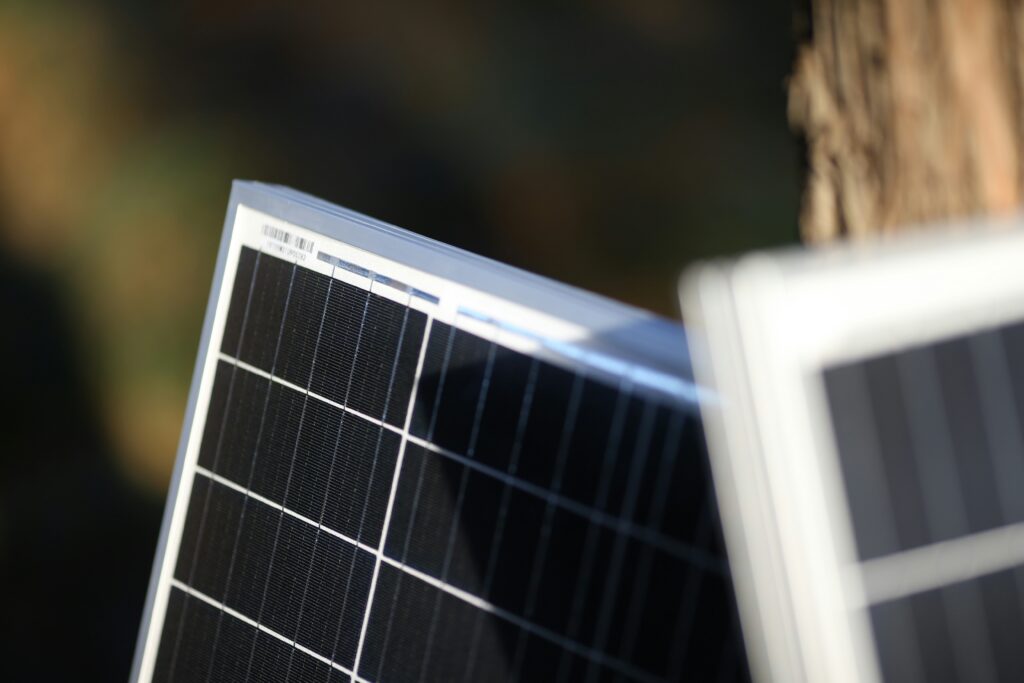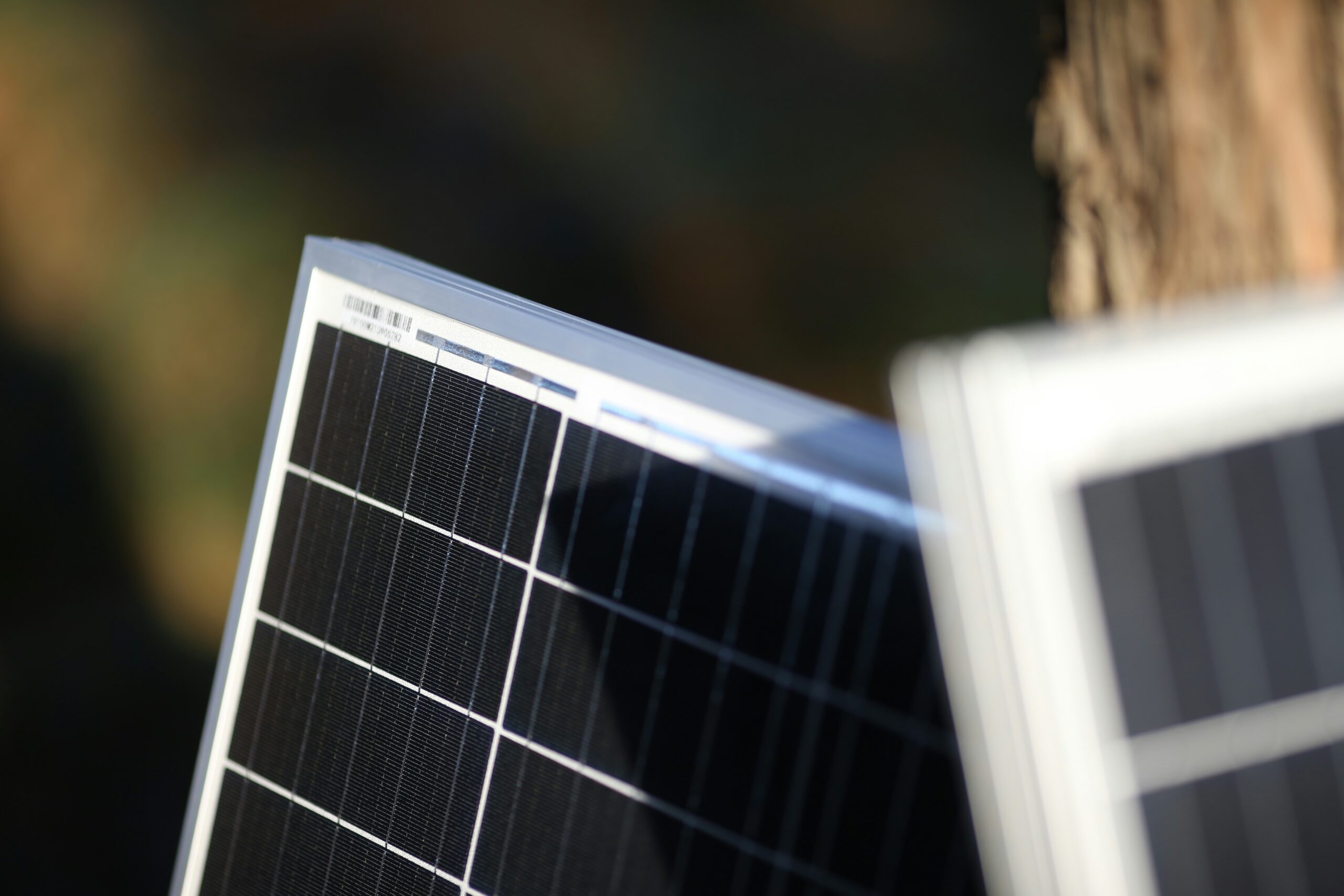How to Avoid Scams and Get the Best Deal
Investing in solar panels is a major financial decision, and with the growing demand for renewable energy, scams and subpar deals have also increased. This guide will walk you through every step of buying solar panels—from choosing the right system to avoiding shady contractors—so you can secure the best deal possible in 2025.

By the end of this guide, you’ll know:
✅ How to compare solar quotes like a pro
✅ Red flags that signal a scam
✅ The best financing options
✅ How to maximize warranties & incentives
Let’s dive in!
1. Understanding Solar Panel Basics
How Do Solar Panels Work?
Solar panels convert sunlight into electricity using photovoltaic (PV) cells. The energy is then converted from DC to AC power via an inverter for home use.
Types of Solar Panels
| Panel Type | Efficiency | Cost (Per Watt) | Best For |
| Monocrystalline | 20-23% | $0.90-$1.20 | High efficiency, limited space |
| Polycrystalline | 15-18% | $0.70-$0.90 | Budget-friendly |
| Thin-Film | 10-13% | $0.50-$0.70 | Large roofs, flexible installs |
2. How to Calculate Your Solar Needs
Assessing Your Energy Consumption
Check your last 12 months of electricity bills to determine your average usage (kWh). Most homes need a 6-10 kW system.
Roof Suitability Checklist
✔ Sun exposure (south-facing roofs are best)
✔ Shading (avoid trees/chimneys blocking sunlight)
✔ Roof condition (should last 20+ years)
3. Finding a Reputable Solar Installer
Red Flags of Solar Scams
High-pressure sales tactics (“Sign today or lose this deal!”)
Unrealistically low prices (could mean subpar equipment)
No physical office or bad reviews
How to Vet Solar Companies
Check BBB, Yelp, and EnergySage reviews
Verify NABCEP certification (gold standard for installers)
Ask for local reference.
4. Comparing Solar Quotes
Key Questions to Ask Installers
- What’s the total cost before & after incentives?
- What’s the estimated system production (kWh/year)?
- Is battery storage included or recommended?
Sample Quote Comparison Table
| Company | System Size | Total Cost | Warranty | Estimated Savings (25 yrs) |
| A | 8 kW | $22,000 | 25 yrs | $35,000 |
| B | 7.5 kW | $20,500 | 20 yrs | $30,000 |
5. Solar Financing Options
Buying vs. Leasing vs. PPA
| Option | Upfront Cost | Tax Credits | Long-Term Savings |
| Cash Purchase | High | ✅ Yes | Highest |
| Solar Loan | Low | ✅ Yes | High |
| Lease/PPA | $0 | ❌ No | Lowest |
Best Solar Loans in 2025
- Credit unions (lowest interest rates)
- HELOCs (tax-deductible interest)
- Manufacturer financing (e.g., SunPower)
6. Maximizing Solar Incentives & Rebates
Federal Solar Tax Credit (ITC)
- 30% off system cost (until 2032)
- Applies to purchased systems only (not leases)
State & Local Incentives
- California: SGIP (battery rebates)
- New York: NY-Sun cashback
- Texas: Property tax exemptions
7. Solar Panel Warranties Explained
Equipment Warranties
- Panels: 25-30 years
- Inverters: 10-15 years
- Batteries: 10 years
Performance Guarantees
Reputable installers guarantee 90% production at 10 years, 80% at 25 years.
8. Avoiding Common Solar Scams
“Free Solar” Schemes
- Often PPA traps with escalating rates
- You don’t own the panels (no tax credits)
Door-to-Door Sales Tactics
- Always get multiple quotes before signing
- Verify claims with independent research
9. Solar Panel Maintenance & Longevity
Minimal Upkeep Required
- Annual cleaning (hose or professional service)
- Monitoring system alerts (for efficiency drops)
When to Replace Components
- Inverters: Every 10-15 years
- Batteries: Every 10 years (if applicable)
10. Final Checklist Before Signing a Contract
✅ Compare at least 3 quotes
✅ Verify installer credentials (license, insurance)
✅ Read the fine print (escalation clauses in PPAs)
✅ Confirm roof inspection (no hidden damage)
Conclusion
Buying solar panels is a smart investment—but only if you avoid scams and secure the best deal. By following this guide, you’ll:
✔ Save thousands by comparing quotes
✔ Dodge predatory sales tactics
✔ Maximize incentives & warranties
Next Steps:
- Get free quotes from EnergySage or local installers.
- Check your eligibility for tax credits.
- Schedule a roof inspection before installation.
With the right approach, you’ll enjoy clean energy and lower bills for decades!
